Photography courtesy of Lowell Washburn, all rights reserved.
Of all the songbirds that grace the Iowa landscape each year, perhaps no species adds richer color or brings a cheerier song than the Baltimore oriole. The oriole’s elegant black and orange plumage is stunning; it’s rich warbling song the musical equivalent of purest crystal. Little wonder the species is regarded as one of our most treasured backyard visitors.
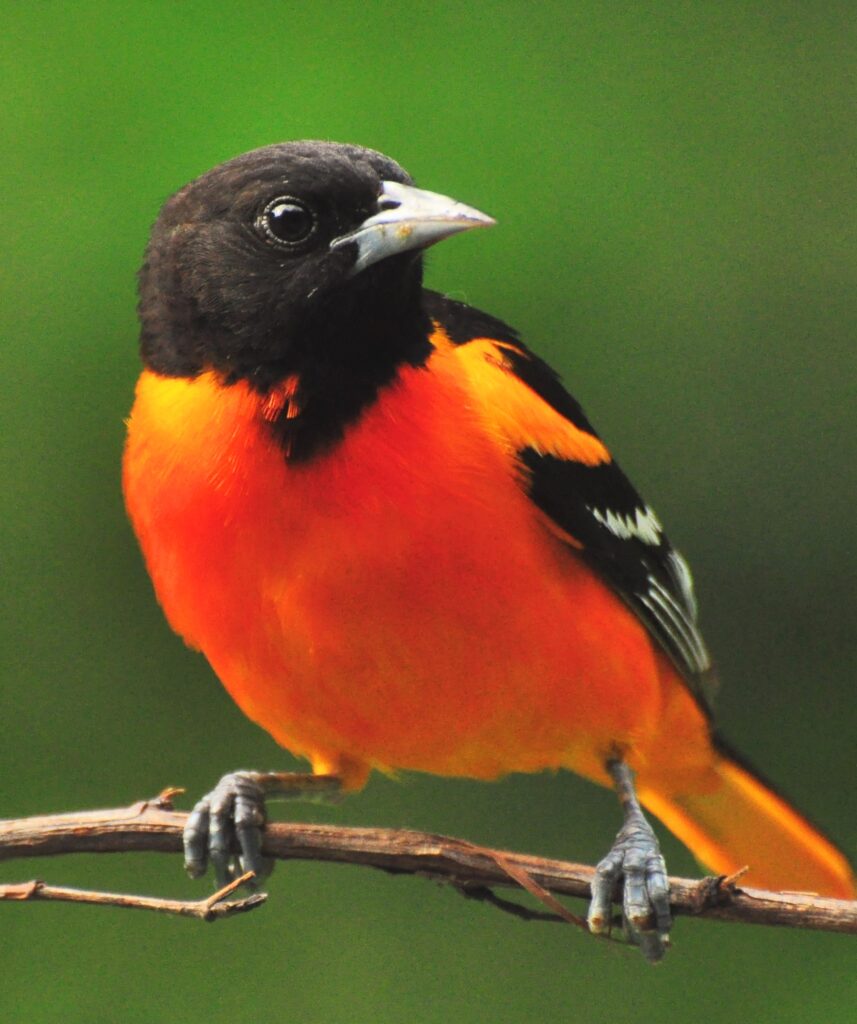
It’s early July and oriole babies are currently leaving the security of home nest sites. Under the watchful care of their parents, fledglings are making initial explorations of neighborhood habitats. Spiders provide a key source of protein for hungry youngsters; and foraging adults gather long legged arachnids with an efficiency that would turn the Orkin Man green with envy.
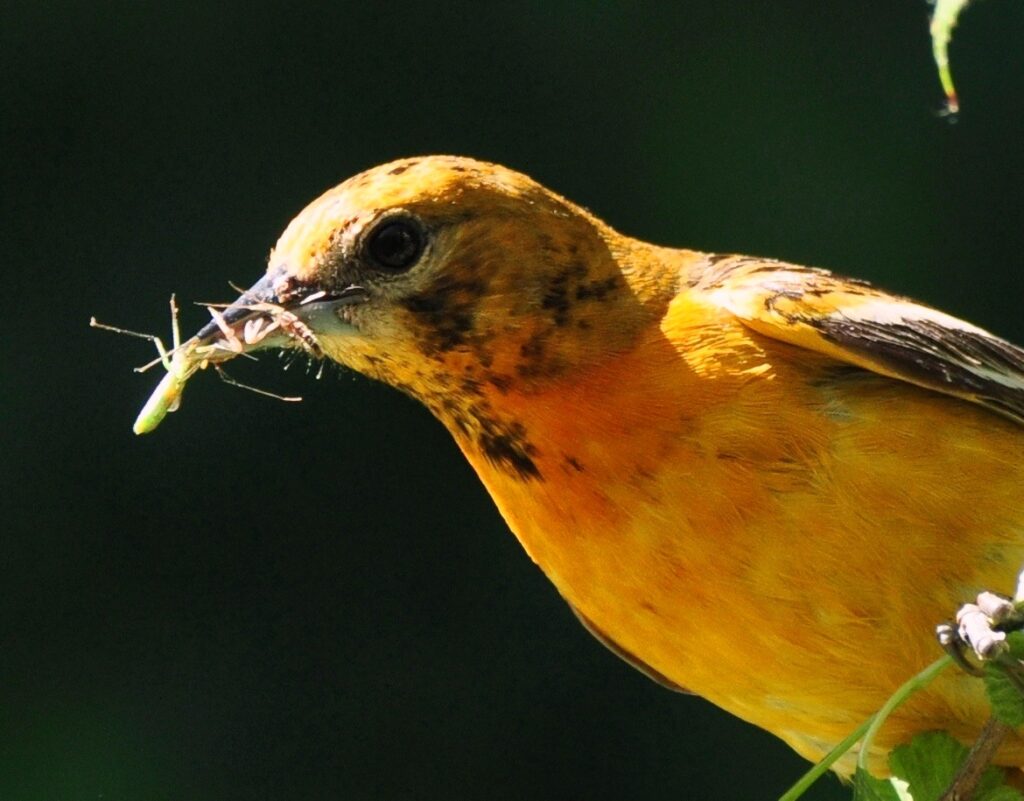
The annual cycle begins in early May, as orioles return to Iowa from winter resorts in Central and South America. Once they arrive on the breeding grounds, adults lose no time in getting down to the serious task of nesting. The female does most of the actual nest construction, utilizing strands of fiber to weave one of the most intricately amazing structures to be found anywhere in the bird world. By the time it’s completed, the pendant shaped hanging basket will have literally become an avian work of art.
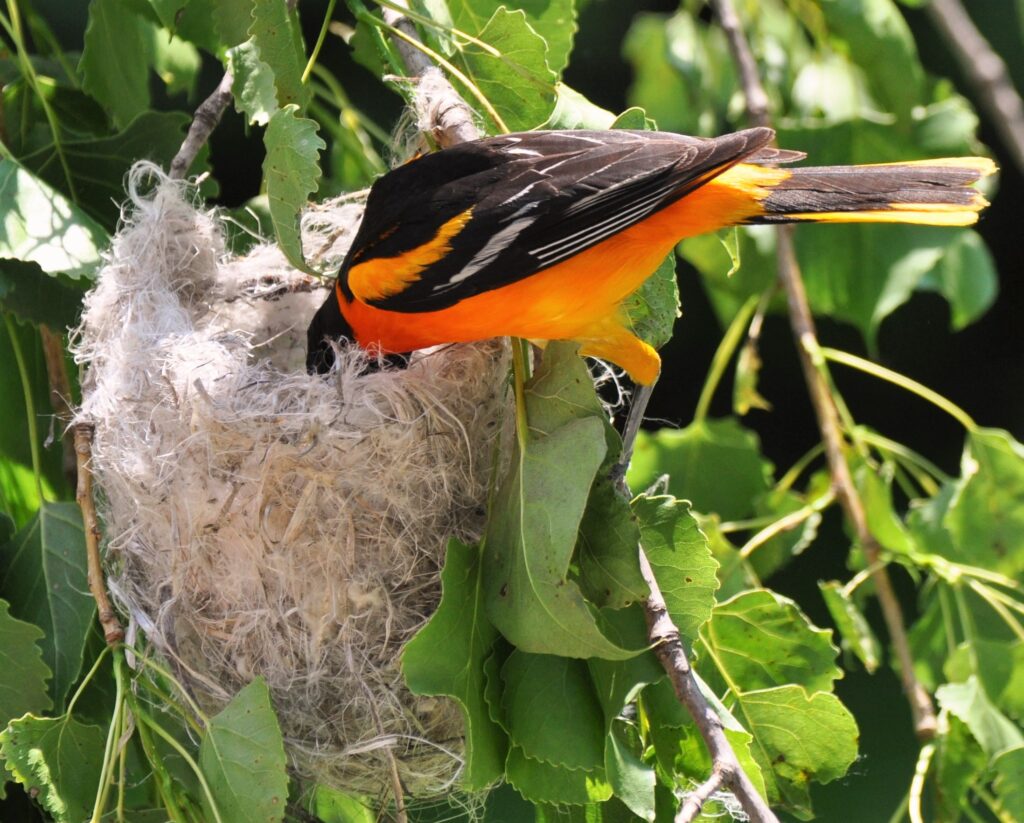
Observing backyard orioles has never been easier – at least not in our lifetimes. Many of us can still remember when Baltimore orioles, along with many other bird species, seemed to only exist as pictures in a book. For North American songbirds, the decades of the 1950s and 1960s were an era of dramatic declines and decimated populations. The era of “Better Living Through Chemistry” had arrived, and times were changing. The widespread and indiscriminate use of a miracle pesticide known as DDT was not only wreaking havoc on its intended victims but was having an insidious effect on more advanced life forms as well. Although the 1962 release of Rachel Carson’s controversial book Silent Spring had catapulted the issue onto the national stage, it would take another decade of bitter debate before DDT restrictions were finally imposed [in the U.S.] in 1972. By then, DDT residues were accumulating in such unlikely places as the fat tissues of Antarctic dwelling penguins. For some species the end appeared near as scientists predicted the eminent extinction of bald eagles, ospreys, and peregrine falcons.
Fortunately, the tables turned before those dire predictions could come true. In the years following the DDT ban, American birdlife has enjoyed a slow but resounding recovery. Today, bald eagles are flourishing. Osprey numbers are on the uptick; peregrine falcons have returned to historic cliff ledge nest sites. Iowa’s parks, woodlots, and residential backyards are once again bursting with bird song – including the distinctive melody of the Baltimore oriole.
Back in the mid-1960s, the sighting of an oriole in my hometown of Clear Lake was a noteworthy event. The species had become so rare, in fact, that in some years we didn’t see a single one. Today there are few, if any, Iowa neighborhoods where the crystal whistle of singing orioles cannot be heard. These days, I often see and hear more orioles in a single morning than I did during all four years of high school. Other popular songbirds – including grosbeaks, buntings, thrushes, and warblers — have enjoyed similar increases in abundance.
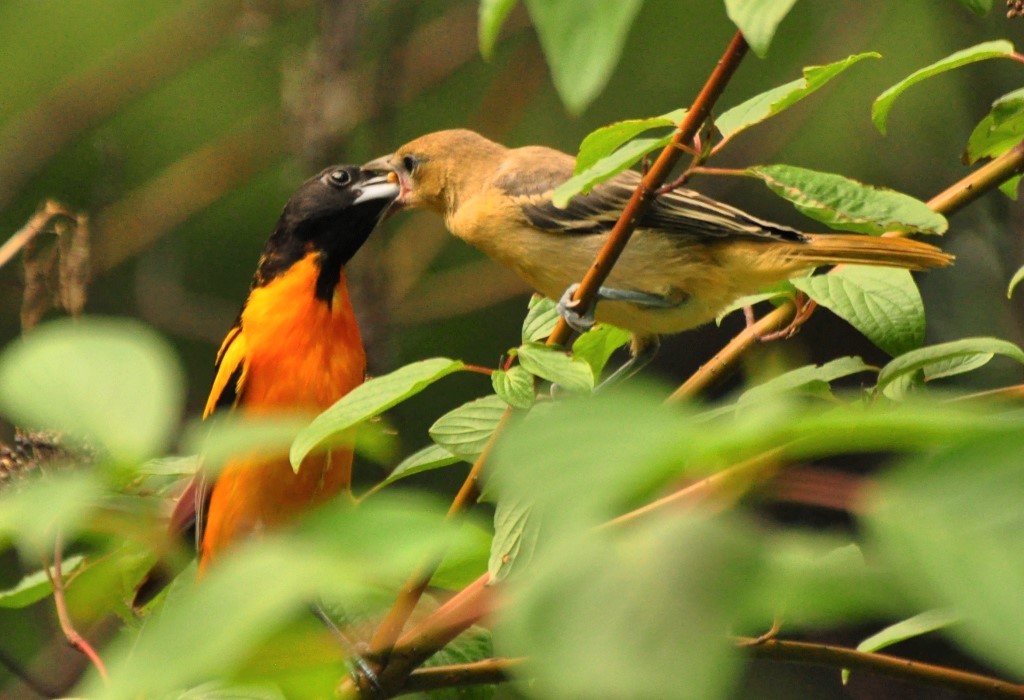
The oriole’s summer song is living proof that environmental transgressions can be reversed. Thanks to a cleaner environment, Iowa’s contemporary landscape is far from silent. If she were here today, I’m sure Rachael Carson would approve.
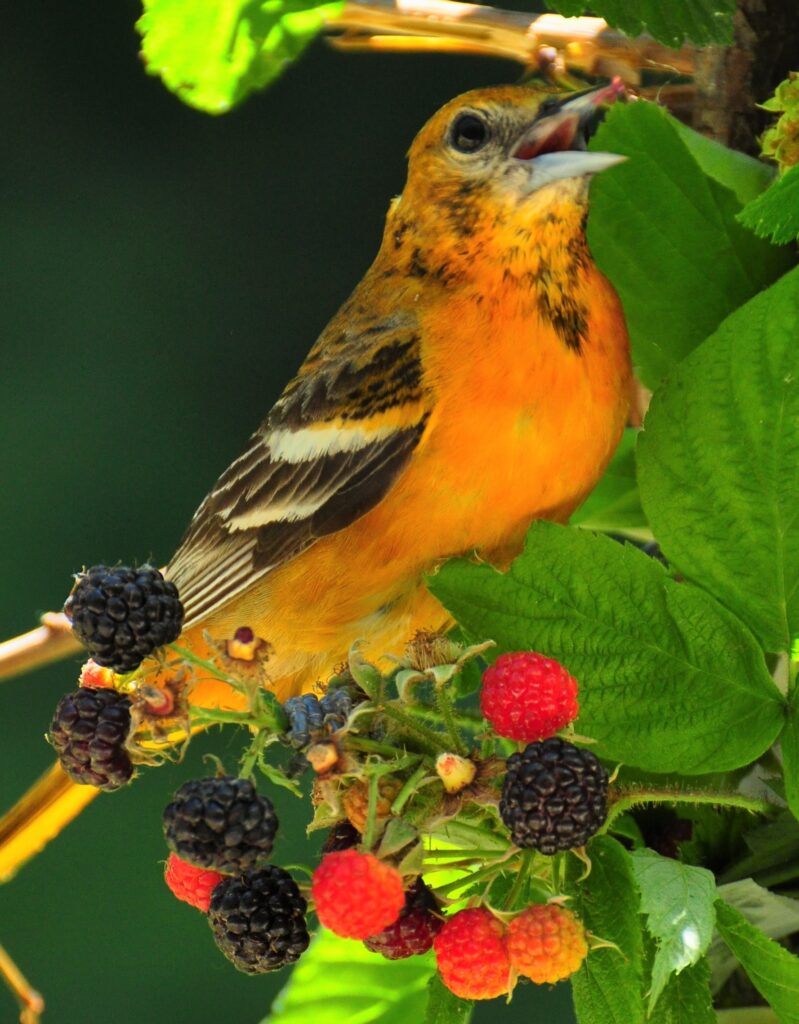

 Tom Cope
Tom Cope Sue Wilkinson
Sue Wilkinson Susan Judkins Josten
Susan Judkins Josten Rudi Roeslein
Rudi Roeslein Elyssa McFarland
Elyssa McFarland Mark Langgin
Mark Langgin Adam Janke
Adam Janke Joe Henry
Joe Henry Kristin Ashenbrenner
Kristin Ashenbrenner Joe Wilkinson
Joe Wilkinson Dr. Tammy Mildenstein
Dr. Tammy Mildenstein Sean McMahon
Sean McMahon